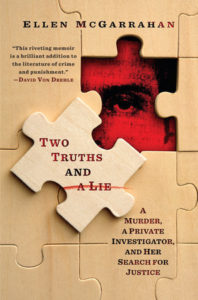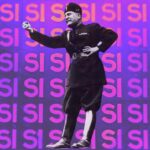My buddy Tex had witnessed two executions for his job with a wire service. He told me it was going to be no big deal. We had been out drinking at an oyster bar near St. Marks National Wildlife Refuge, a marshy stretch of mudflats and alligators on the Gulf of Mexico. “They sit up straight when the juice hits them, and then they slump forward and they’re dead,” Tex told me, in his molasses drawl. “The worst part about it, babe—and I mean this—is the long, boring drive back home.”
That is not what happened to Jesse Tafero.
When the electricity hit Jesse Tafero, the headset bolted onto his bare scalp caught fire. Flames blazed from his head, arcing bright orange with tails of dark smoke. A gigantic buzzing sound filled the chamber, so deep I felt it inside the bones of my spine.
In the chair, Jesse Tafero clenched his fists as he slammed upward and back.
He is breathing, I wrote on my yellow notepad.
The executioner, anonymous in the booth, turned the power off. Jesse, in the chair. Nodding. Breathing. His chest heaving. Then—the buzzing again. Flames. Smoke.
His head nods. His head is nodding. He is breathing.
My prison-issued pencil dug into the page so hard that the paper ripped.
I can see him sigh.
Outside again, the daylight was a hammer. The van dumped us back out onto the field opposite the prison and drove away. I stood there trying not to blink. It had taken seven minutes from the time the executioner first turned the power on until Jesse was declared dead, and three separate jolts. Usually it took one jolt, one minute, no nodding, no flames, no smoke, no heartbeat, no sighs. I went back to my motel room to file my story, working at a table next to a window. One of the radio reporters who had been at the execution sat with me because he didn’t want to be alone. I propped open the door to my room so we could smoke cigarettes together while we wrote. My computer was a Radio Shack TRS-80, a Trash 80, about the size of a cereal box with a screen that displayed eight lines of text, and I typed fast on deadline and transmitted my report down to the city desk using rubber cups fastened around the handset of the motel room telephone. Twice it cut off before finishing. A buzzing on the line, the operator said.
I did not know this then, but I had picked up a ghost.
That summer, after the execution, my house in Tallahassee was robbed. I came home from the Herald one day to find my front door jammed open and everything I owned trashed on the floor. I moved instantly. My new place was in a forest by a set of railroad tracks, deep in a ravine. When the freight trains came through, the ground shook, a low rumble like a far-off growl, a sound that kept catching me off guard. Every morning, I ran up the hills of the city in the punishing heat. In July, I went back to Florida State Prison for a test of the electric chair. The prison officials had determined that a kitchen sponge they’d used in the headset during Jesse’s execution was to blame for the fire, and to prove that the chair was working they hooked up a metal colander to the same wire that they’d bolted onto Jesse’s head, put the colander in water, and turned the power on. The water boiled.
After I saw that, I stopped being able to run uphill, and then to run at all. When I tried, my breath turned to lead. I’d been seriously dating a reporter—beautiful, hilarious—from the Herald’s city desk, but I abruptly broke up with her and took up with Tex, getting wasted on beer with him on Saturday afternoons out on St. George Island. There was a high bridge out to the island, and I found that if I hit the top of it at the right speed there was a moment when the road disappeared and it felt like flying, white pylons flashing past and blue water shining all around. The heat out at the shore was so intense that on the drive home I sometimes stopped and threw myself into the Wakulla River, water the color of tea, cottonmouths in the trees.
Go see another one, Tex told me. That’ll get it out of your mind.
In August a serial killer stalked Gainesville just as the University of Florida was starting its fall term. Four young women murdered, one young man. Mutilated, decapitated. I was sent to cover the story. Everywhere I went in Gainesville, people told me I fit the profile, meaning I too was a young woman with dark hair. Like the victims. Like a lot of other people also, I said. An old man at the city morgue insisted: You could be next.
The following spring, I spent my days rereading my battered college copy of Les fleurs du mal in the rotunda of the capitol during the legislative session instead of taking notes in the committee meetings, which I decided were soul-crushing rodeos of blowhards and existentially irrelevant concerns. As opposed to French poetry, you see. It was all lies, I told my bureau chief, the one who’d never witnessed an execution. Liars and lies.
Being a journalist was what I’d wanted to do. From the time I first read Brenda Starr in grammar school to editor jobs on my high school and college papers to an investigative reporting internship at The Village Voice to a local news stint at a small Massachusetts daily to political reporting at The Miami Herald, I had devoted myself to finding the truth, making it public, holding the powerful to account. But after witnessing Jesse Tafero die, I could not tell if any of that shit mattered, at all.
It was purely by chance that I started working as a private detective.
In the winter of 1992, I packed all my belongings in my car, drove out to California, and got a job in construction. Tile setting. It wasn’t anything I’d ever thought of before. In this new life, I had a hose, a shovel, two five-gallon buckets, a pair of leather gloves for carrying things, and a pair of rubber gloves for cleaning up. My job was to load sand, lime, and cement into a mixing pan, add water, shovel the wet mud into the buckets, and lug the buckets upstairs without tripping over my own feet or gouging the walls. I liked it. With tile, a small mistake at the beginning could turn into a much bigger mistake at the end, one that would be impossible to change since everything was literally set in stone. I respected that. The zero-bullshit factor of the physical world. My new girlfriend had a big red dog, an Akita mix who looked like a giant fox, and he became my dog as well, riding shotgun in the front seat of my powder-blue Volvo sedan as I went from one high-end residential job site to the next. Palo Alto, Mill Valley, Hillsborough, Sea Cliff, Sausalito. A new world of Port-O-Lets, pallets, shards of Sheetrock everywhere like shattered snow. The hills above the Berkeley flatlands had burned to the ground the previous autumn, and on jobs up there I found myself in a blasted wasteland of melted glass and twisted metal. That felt familiar to me. I moved into a stilt house out on a marshland, and after work I watched night herons hunt in the shimmering shallows below my dock. I envied those birds. Their ability to tune everything out—and fly away.
Every day now ended in a layer of fine gray dust on my skin. A shroud, slowly lightening as it dried to white. At work I earned my pay sweating, with my heart pounding, my arms and legs on fire. I am alive. I listened to the radio, turned up loud. I hated the hardrock music that played on every job site radio and then I started to love it—the foolproof brainwashing of merciless repetition. Some of the clients spoke slowly to me, enunciating their words carefully as they stared at my cement-covered clothes. Others were kind; one blistering afternoon a homeowner appeared with a bowl of plums, cold from the refrigerator, burstingly sweet. A few of the job site guys were jerks, but I let it roll. Mostly I was invisible. It was all okay. I knew I was making myself pay penance for sitting in a folding chair like a spectator at a sports match and watching a man die. I just did not exactly know why.
One Friday evening, not quite two years after the execution, I was watching television in my living room. On ABC, the news program 20/20 was beginning, with Barbara Walters in a bright yellow suit. Suddenly a close-up of my front-page Miami Herald story about the execution—my byline, right there—flashed onscreen. “3 jolts used to execute killer.” An announcer asked: “Could the State of Florida have executed an innocent man?”
On my couch, I froze.
*
Excerpted from Two Truths and a Lie: A Murder, A Private Investigator, and Her Search for Justice, by Ellen McGarrahan. Random House. Copyright Ellen McGarrahan, 2021. All rights reserved.
Featured image: Eastpoint, Florida: St. George Island Bridge: Looking north; Ebyabe, 2010.


















